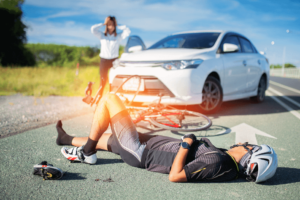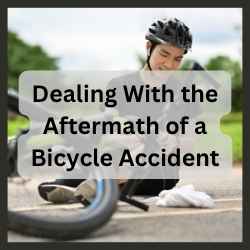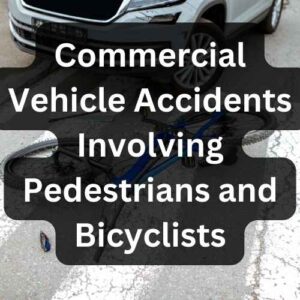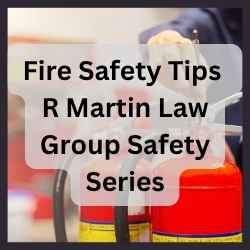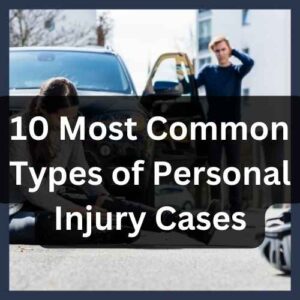
Bicycle Accidents are an unfortunate and growing concern across Washington State, particularly as more and more residents choose cycling as their go-to mode of transport or for recreation. At R Martin Law Group, we’re dedicated to both advocating for crash victims and empowering the community with the critical facts, trends, and life-saving guidance you need. Led by the distinguished Rich Martin – recognized as one of America’s National Top One Percent personal injury attorneys – our Bellevue-based firm brings deep expertise, local insight, and unwavering commitment to keeping Washington’s cyclists safe and informed.
Sobering Statistics: Bicycle Accidents on the Rise in Washington
Let’s get straight to the facts: Bicycle accidents in Washington are not just frequent, but their severity is climbing year after year. In 2023 alone, the Evergreen State saw 18 bicyclist fatalities and 157 serious injuries in traffic crashes – a dramatic 63.6% surge in deaths and a 12.1% jump in major injuries compared to 2022. That’s not just a blip; over the past decade, bicycle fatalities have ballooned by 200%, with serious injury rates up a staggering 53.9%. (WSDOT)
Drill down further, and you’ll discover some telling patterns:
- The 10-year annual average now sits at 13.4 deaths and 114.8 serious injuries for cyclists.
- One-fourth of fatal bicycle accidents occur at intersections when a cyclist is crossing the road.
- Worryingly, combined cyclist and pedestrian deaths represent 20% of all Washington traffic fatalities—and the trend is upward.
Why are bicycle accidents increasing in Washington every year? Key factors include population growth in metro areas, surging cycling participation, distracted drivers and road users, and gaps in infrastructure that lag behind safer, more bike-friendly designs. For all the health and environmental benefits of cycling, Washington’s streets have, unfortunately, grown less hospitable for its most vulnerable road users.
What are the Most Common Hotspots for Bicycle Accidents in Washington?
If wisdom is knowing where danger lurks, understanding the geographic and traffic patterns of bicycle accident hotspots is essential. The data is clear: urban intersections, busy arterial roads, and high-traffic city corridors are the scenes of the majority of Washington’s serious and fatal bicycle crashes.
Bicycle Accidents at Intersections: The Most Dangerous Places
How to avoid bicycle accidents at intersections in Washington begins with knowing that nearly 25% of deadly crashes happen when a cyclist crosses a street—most often at intersections. High population density, complex traffic flows, and limited visibility combine to make intersections ground zero for disaster, especially in fast-growing cities.
The state’s top hotspots for bicycle accidents are:
- Seattle: With roughly 85% of state-reported crashes, the Emerald City’s downtown intersections and arterial thoroughfares are the epicenter. Busy roads such as Pike/Pine, Broadway, and Roosevelt Way NE consistently rank high for wrecks.
- Tacoma: The city’s most dangerous zones are Pacific Avenue (especially near S 56th St and the South End), the North End residential areas, and E Portland Ave near I-5. Wondering where do most fatal bike accidents happen in Tacoma Washington? It’s these very intersections and arterial stretches—often where roadways converge, merge, or funnel high-speed traffic.
- Other Metro Areas: Downtown corridors, mixed-use (residential and commercial) strips, and zones near schools or shopping centers all see higher collision rates, usually where vehicle and bike flows mix.
Roads to Watch: What Are the Most Dangerous Roads for Cyclists in Seattle, Washington?
- Principal arterials: These main city veins—think Rainier Ave S, Lake City Way NE, or the busy stretches of 3rd Ave in Seattle—host around 38% of fatal bike crashes.
- Minor arterials and major collector streets: Not as wide but just as risky due to variable speeds and cross-traffic.
- State highways and major surface streets: City mapping shows major highways and their immediate “buffer zones” account for up to 21% of bicycle/vehicle collisions, with these figures even higher during peak commute times.
Parking lots, business districts, and driveways in urban corridors also register as perennial danger zones, with unpredictable vehicle movements and occasional blind corners putting cyclists at grave risk.
Major Causes of Bicycle Accidents: Why These Tragedies Happen
Bicycle accident causes in Washington echo national trends but with some unique twists:
- Driver inattention: Phones, GPS, food—drivers are more distracted than ever, and failure to yield at intersections is a prime culprit.
- Cyclists riding against traffic: Over 25% of fatal incidents involve a cyclist moving in the wrong lane.
- Low visibility, especially at night: Shockingly, 40% of bicycle deaths occur after dark.
- “Dooring” accidents: Parked car doors suddenly opening into a bike’s path are all too common in city neighborhoods.
- Road hazards: Potholes, debris, and crumbling pavement create dangerous situations, often sending cyclists swerving into traffic or crashing.
Put simply: Whether you’re in urban Seattle, Tacoma’s busy core, or a suburban street in Bellevue, every journey involves risks if drivers and cyclists alike aren’t alert, law-abiding, and prepared.
Bicycle Safety Tips for Riding at Night in Washington State
Nightfall can turn even a familiar street into a treacherous obstacle course for cyclists. If you have to ride after sunset, safety can’t be left to chance. Here are top bicycle safety tips for riding at night in Washington state:
1. Light Up Like a Lighthouse!
- State law says you must have a front white light visible for at least 500 feet and a rear red reflector. Don’t stop there — add LED helmet lights, wheel spoke reflectors, and bright safety vests.
- Use blinking safety lights; drivers are far more likely to notice flashing than constant lights.
2. Reflective Gear Is Your Best Friend
- Wear reflective bands on your arms and ankles, plus high-visibility jackets. Studies show that moving reflectors (like ankle straps) are especially eye-catching to drivers.
3. Position Yourself Defensively
- Stick to well-lit routes where possible.
- Ride at least three feet from parked cars to avoid “dooring.”
- Scan constantly for erratic drivers or unexpected road obstacles, especially at intersections and driveways.
4. Minimize Distractions
- Leave headphones at home (it’s illegal in some places) so you can hear approaching vehicles, sirens, or even a car door opening into your path.
- Keep your focus razor-sharp and avoid unnecessary lane changes.
How to Avoid Bicycle Accidents at Intersections in Washington
Given intersections are where calamity most often strikes, knowing how to avoid bicycle accidents at intersections in Washington can save your life. Practical steps include:
- Obey every traffic law: Always stop for lights and stop signs; never assume you can “beat the green.”
- Ride with traffic: Never against—it’s not just illegal, it increases crash risk exponentially.
- Make eye contact with drivers: This simple act signals your intent and ensures the driver has seen you.
- Use clear hand signals: Letting others know you’re turning or stopping can make all the difference.
- Watch for turning vehicles: Many crashes occur when cars or trucks turn right across your path—be especially vigilant at driveways and side-streets.
- Stay out of blind spots: Large trucks and buses may not see you, especially at wide intersections—always give them room and never assume.
The key is to ride predictably and proactively, not reactively.
Why “Safe” Streets Aren’t Always Safe: Underlying Factors in the Rising Tally
Why are bicycle accidents increasing in Washington every year? Let’s peel back the curtain.
- Increased ridership: Cities like Seattle, Bellevue, and Tacoma are seeing double-digit increases in bike commuting and leisure riding, making cyclist presence more common on once car-dominated roads.
- Infrastructure gaps: New bike lanes are popping up, but many streets are still poorly designed for bikes, with faded lines, awkward merges, or just a narrow shoulder next to fast-moving vehicles.
- Distracted driving epidemic: Smartphone use behind the wheel has soared, leading to tragic “I didn’t see them!” moments.
- Nighttime risk: As previously noted, nearly half of all fatal wrecks happen after dark, yet few cyclists take enough precautions with lighting and visibility.
- Intersection complexity: More signals, more turning options, more unpredictability — intersections require split-second decisions by everyone involved.
The Most Dangerous Roads for Cyclists in Seattle, Washington
You asked: What are the most dangerous roads for cyclists in Seattle Washington? The answer: Seattle’s principal arterials—major multi-lane roads that funnel thousands of cars and trucks daily—are by far the most hazardous.
- Top offenders include Rainier Ave S, Lake City Way NE, 15th Ave NW, Roosevelt Way NE, Aurora Ave N, and the downtown stretches of 3rd Ave and Pine/Pike corridors.
- These roads have higher speed limits, heavy transit traffic, and multiple intersections—creating a recipe for disaster.
- “Dooring” incidents and right-turn collisions spike along narrow streets lined with parked vehicles or in densely packed business districts.
Secondary risks pop up on rush-hour commuter corridors and routes near major events or venues, where distracted drivers in a hurry add another layer of danger.
Where Do Most Fatal Bike Accidents Happen in Tacoma, Washington?
For Tacoma cyclists, understanding where do most fatal bike accidents happen in Tacoma Washington could mean the difference between a safe journey and catastrophe.
- Pacific Avenue (especially at intersections like S 56th St and surrounding South End): Fast traffic, frequent lane changes, and complex signals make these segments especially deadly.
- E Portland Ave (near the Bay St/I-5 interchange): Variable speed zones, merging lanes, and limited shoulder space pump up the risk.
- North End residential zones: Although lower speed, these areas can lull cyclists and drivers into complacency, masking driveways or blind corners.
Many of Tacoma’s most severe accidents involve intersections near freeway exits, where drivers are focused on merging or accelerating rather than checking for cyclists.
Other Essential Bicycle Safety Tips in Washington
No one expects disaster to strike, but every little precaution puts the odds in your favor:
- Always wear a helmet: While not mandated everywhere, it cuts fatal head injuries dramatically. In 91% of deadly bike crashes, cyclists were not wearing helmets.
- Follow the rules of the road: Cyclists must obey the same rules as motor vehicles—including stops, signals, and yielding.
- Maintain your bike: Regularly check brakes, tires, and reflectors to ensure all components work properly.
- Use bike lanes where available: Ride as far right as practical, but be cautious of parked cars and road debris.
- Drivers must pass at least three feet away: This is law in most Washington cities—if a driver crowds you, it’s not just dangerous, it’s illegal.
- Ride defensively: Always assume drivers might not see you—assert your presence, but don’t assume invulnerability.
- Be alert in parking lots and driveways: Sudden vehicle movements and limited sightlines are especially hazardous.
R Martin Law Group: Advocating for Cyclist Safety and Justice
Bicycle accident victims face a whirlwind of challenges—physical, financial, and legal. Whether you’ve suffered injuries in a Bellevue bike lane, a downtown Seattle crosswalk, or at a busy intersection in Tacoma, expert guidance makes all the difference.
Rich Martin and the R Martin Law Group bring a tireless work ethic, deep experience, and a reputation for delivering justice to every cycling client. We provide:
- Thorough accident investigation, including scene analysis and expert witness consultation
- Skilled negotiation with insurance companies
- Aggressive courtroom representation, when needed
- Compassionate support through every stage of recovery
We stand ready to protect your rights, maximize your compensation, and promote a safer environment for every Washington cyclist.
Put Safety First – And Know Your Legal Rights
Washington’s cycling community has every reason to be proud – but also every reason to be vigilant. The dramatic rise in bicycle accidents demands mutual responsibility from cyclists and drivers alike: strict adherence to the law, heightened awareness at intersections, and above all, a commitment to making every ride as safe as humanly possible.
Key takeaways:
- Intersections and major arterial roads are the #1 risk areas—whether in Seattle, Tacoma, or Bellevue.
- Night riding multiplies danger; invest in the best visibility gear you can find.
- Obey every law, use designated bike lanes, and never let your guard down.
- When in doubt—or if you’re injured—trust legal leaders who put cyclists first.
If you or your loved one has been affected by a bicycle accident in Washington, don’t navigate the road to recovery alone. Contact R Martin Law Group today. With Rich Martin’s national recognition and our local expertise, you can pedal forward with confidence, knowing your legal rights are fiercely protected.
Stay safe, ride strong, and remember: knowledge and preparation are your best defense on the road!
Looking for seasoned legal counsel, local accident data, or more bicycle safety tips? Reach out today. We’re honored to serve Washington’s cycling community—one rider, one case, and one safer road at a time.
Contact us today for a no-obligation consultation and take the first step towards finding peace of mind.
Call (425) 635-2000 to Discuss Your Case Details. 100% No Win No Fee Guarantee.

